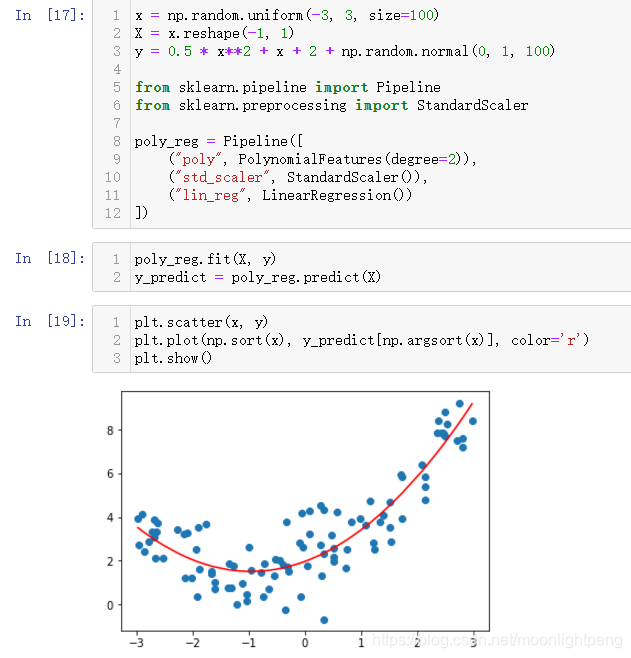目录
8-2 scikit-learn中的多项式回归于pipeline
8-3 过拟合与前拟合03-Overfitting-and-Underfitting
8-1 什么是多项式回归


x看作是一个特征,x^2是另一个特征,则可以看作是线性回归,但实际结果就是非线性

线性回归?

解决方案, 添加一个特征


x无序的
8-2 scikit-learn中的多项式回归于pipeline
scikit-learn中的多项式回归和Pipeline

X零次方前的系数为1,第二列为x的值,第三例为x的平方

关于PolynomialFeatures

如果样本有两个特征则1, a, b, a*a, a*b, b*b

Pipeline

x = np.random.uniform(-3, 3, size=100)
X = x.reshape(-1, 1)
y = 0.5 * x**2 + x + 2 + np.random.normal(0, 1, 100)
from sklearn.pipeline import Pipeline
from sklearn.preprocessing import StandardScaler
poly_reg = Pipeline([
("poly", PolynomialFeatures(degree=2)),
("std_scaler", StandardScaler()),
("lin_reg", LinearRegression())
])8-3 过拟合与前拟合03-Overfitting-and-Underfitting

均方误差来对比
使用线性回归

使用多项式回归

from sklearn.pipeline import Pipeline
from sklearn.preprocessing import PolynomialFeatures
from sklearn.preprocessing import StandardScaler
def PolynomialRegression(degree):
return Pipeline([
("poly", PolynomialFeatures(degree=degree)),
("std_scaler", StandardScaler()),
("lin_reg", LinearRegression())
])


train test split的意义

来源:oschina
链接:https://my.oschina.net/u/4416268/blog/4302888